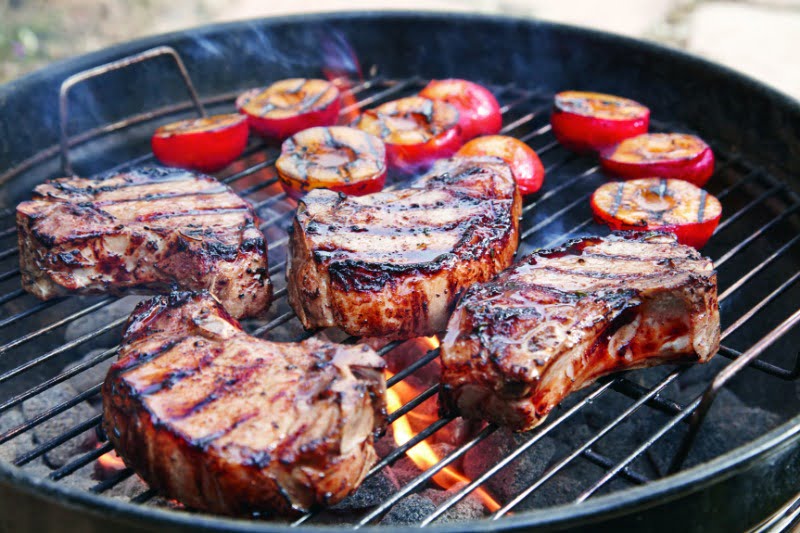Serious grillers recognize that grilling with charcoal gives your meats a desirable smoky taste, which you can’t obtain with gasoline grills. Grilling with charcoal may seem a chunk trickier than using a gas-fueled grill. However, the effects will be worth more effort once you grasp how to manage the heat.
We spoke with Chef David Bruno, PCI and companion professor at The Culinary Institute of America, to get his pointers to set yourself up for fulfillment when grilling with charcoal.
There are primary alternatives on your charcoal buy – well-known charcoal briquettes or natural lump charcoal. The Natural lump charcoal is typically more highly-priced but does not comprise any of the briquettes’ additives. “The popular briquettes do work; however, for a high trendy product, the herbal lump charcoal would be great,” Bruno says. Here are a few examples of every with favorable customer opinions on Amazon:

You also can remember supplementing the charcoal with wooden chips to feature some distinct flavor from the smoke the wooden puts out. “You do have the first-class flavor with the lump charcoal; however, supplementing it with the difficult timber offers you that true smoky taste,” Bruno says. If you’re supplementing with wood chips, soak them in water for a day. Wood chips are sold in numerous distinctive flavors, from fruit and mesquite to strong point chips like a grapevine. Here are a few examples to be had on Amazon:
Preparing your charcoal grill calls for some steps: smooth out any ash remnants from your final grilling adventure (extra on this later) and open the vents to allow oxygen to bypass thru. Then you could heat up you could then sing lighting fixtures and some charcoal, and prepare the grates thru a process known as the season seasoning process to accelerate the system of having your charcoal going; Bruno’s desired method is to use a product called a chimney starter, like this Weber 7429 Rapid Fire Chimney Starter available for $19.99 on Amazon.
Follow the steps to apply the chimney starter:
Place newspaper or lighter cubes (we suggest the Weber 7417 Lighter Cubes) at the bottom of the chimney starter.
Fill the top of the chimney starter with charcoal.
Light the newspaper or lighter cubes at the bottom to get your coals burning speedy Pour the burning coals onto a bigger batch of lump coal. If you don’t have a chimney starter handy, you may pile your charcoal in a pyramid and use an igniter to get the heat going. Matchstick starters are a terrific technique.
Bruno discourages using an accelerant like lighter fluid and warns that it can bring about some taste switch from the materials. This is also one of the motives Bruno prefers natural lump charcoal over briquettes.
Whether using the chimney starter or a trendy technique to get your charcoal burning, you will recognize the charcoal is ready to go while it has developed a white, chalky look and an amber glow. This will generally take between 20 to half-hour. Once the grill starts heating up, seasoning the grates is time. This doesn’t imply sprinkling the grates with spices, but as an alternative, “creating non-stick surroundings and cleaning the grill at the identical time,” Bruno says. To season the grates once the grill is pre-heated, observe the steps:
Brush the rods and grates with a twine brush.
Wipe the grates easily with a rag or material; you could use tongs and grill gloves (try the Mr. Smith BBQ Grill.
Gloves) to save yourself from getting burned
Apply a thin coat of oil with another rag or cloth to prevent your food from sticking to the grill; again, use tongs and grill gloves to avoid burns.
Controlling the Heat for a Perfect Cook
Once the charcoal is ready and your grill is well-pro, you can control the temperature by dispersing the coals. For instance, raking a small pile in one route, then leaving a larger
fortune on the opposite facet will provide you with two zones for warmth. Adjusting the vents will even resource in controlling the temperature. Open the vents wider to gasoline the hearth with extra oxygen and create greater heat, or lead them to smaller (without final them) to lower the flame and temperature.
Bruno says that cooking a large piece of meat that will take numerous hours to cook dinner requires greater indirect heat. You can depart the coals on one facet of the grill and flow the beef to the opposite aspect.
Examples of objects that can want indirect heat are an entire bird, brisket, or beef butt. More portion-sized, smooth gadgets like red meat cutlets or chops, steaks, or tuna steaks will require higher – i.e…. More direct – heat. Bruno shared the underneath caution signs which can indicate you are not cooking the beef efficaciously:
